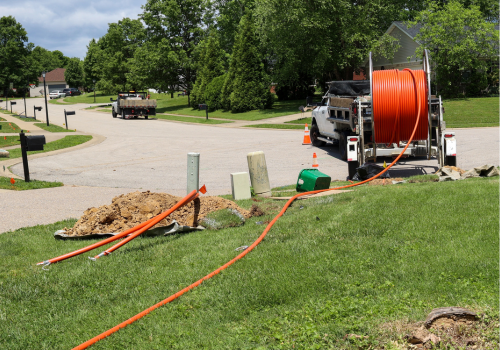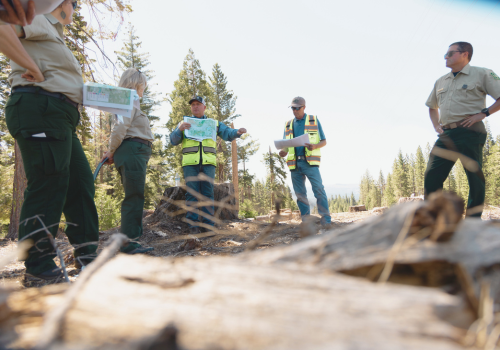Line workers are currently in high demand, wages are rising and there’s significant competition, especially for journeyman linemen. Line workers are typically employed by utility contractors, investor-owned utilities, or publicly-owned utilities.
“It is a challenging and difficult job,” says Paul DeCotis, Senior Partner, Energy and Utilities, with West Monroe, a digital consulting firm. Having worked as an executive at Long Island Power, he knows firsthand that the job is not for everyone. For example, about a quarter of apprentices don’t make it through the four-year apprentice program hosted at Fairport Electric, a municipal-owned utility in Fairport, N.Y.
“Long hours, the physical nature of the work, and inclement weather can be challenging,” explains DeCotis.
“I used to recruit one lineman every other year, when someone retired” says Matthew Hegarty, Superintendent of Electric, for Fairport Municipal Commission. “Now I may replace three or four linemen each year.” Fairport Electric employs 18 line workers to support service to 184,000 residents in the village and most of neighboring Perinton. In the years 2016-2020 the utility was recognized by the American Public Power Association for the reliability of their service.
While base wages for public utilities are similar to those offered by private utilities, Hegarty says the difference is in the overtime pay that line workers can earn working for investor-owned utilities. “A lineman could live in our town, work for a nearby investor-owned utility, and typically make an additional $100-125K in overtime pay, compared to only $10--$15K in overtime pay at Fairport,” says Hegarty. With such a high rate of reliability at the utility, outages, and overtime are not common.
Hegarty has increased salaries for linemen three times over the past five years to improve recruiting and retention. He turns to industry salary studies for guidance. An established four-year apprenticeship program is successful in attracting young workers to the program, and contracts require them to stay for a few years after they become journeymen. However, recruiting journeymen remains a challenge for the utility.
Offer Work/Life Balance
Among Hegarty’s selling points with new recruits is a better work/life balance that comes with fewer overtime hours. “We promote family very hard,” he says. “It’s important to myself and everyone that works with me.” He also stresses the opportunity to work on a wide variety of tasks such as overhead work, underground work, and substations. “You can see the operations from start to finish,” he says. Lastly, Fairport offers employees increased flexibility when it comes to working overtime, something that isn’t possible in many other utility work environments.
When interviewing new linemen, Hegarty focuses on honesty. “We’re not going to be able to compete on overtime.” He brings in Fairport linemen to talk with prospective new hires. “We have honest conversations about safety and other aspects of work-life,” says Hegarty. “We want them to feel comfortable.”
To reach new recruits, Hegarty has tried a variety of media, but finds that word of mouth and promoting locally works better than national job search websites. They actively promote jobs on Facebook, LinkedIn, and the village/utility website.
Meet People Where They Are
Municipal utilities aren’t the only organizations that have found they need to be more proactive in recruitment and retaining lineman. Large energy providers are also challenged by the current labor market. “Between an aging workforce and all the new work on the grid, it’s a very competitive market,” says Kenneth Holiday, senior recruiting consultant for Georgia Power, a subsidiary of Southern Company. Southern Company is one of the largest energy companies in the US with operations in 14 states and more than 9 million customers. They employ 1700 distribution line workers and are currently recruiting about 200 new line workers annually.
“The way you combat a competitive market, is meeting people where they are,” says Rob Sunderland, Talent Acquisition Director for Southern Company. This means working closely with tech schools, launching a high school internship program, actively recruiting from the military, and building awareness in the community for tech programs. “You can post jobs or you can go out and intentionally recruit candidates. We actively and intentionally recruit talent from a variety of sources,” adds Sunderland.
Looking to fill its pipeline with potential candidates, Southern Company and its subsidiary Georgia Power recently launched a website that provides valuable resources for those interested in careers in energy, including line worker positions. Poweringcareers.com connects prospective workers to technical schools, practice employment tests, career resources, videos, and scholarship opportunities. “While we are active on social media, the most effective tool for us has been the poweringcareers.com website,” says Holiday.
A strong employment brand helps Southern Company differentiate itself in the market. The company was recently named the No. 2 Best Large Employer in America in Forbes magazine's 2022 rankings. Of the 500 large employers ranked, Southern Company was No. 1 among energy industry peers, No. 1 among companies in Georgia, and No. 1 across the entire Southeast.
“Our employees are actively engaged in the local communities, and market us as an employer of choice,” says Sunderland. “We’re known as a strong employer that develops employees and ensures they can have a career and not just a job.”
According to Holiday, the messages that resonate most with line workers are “a great place to work,” “great benefits” and “we’re going to train you.” For military candidates, a focus on safety is very important.
Focus on expanding workforce diversity
One way to achieve success in recruitment is to look outside the traditional demographic. According to BLS data, just 4.1% of line workers are female. Southern Company has made a concerted effort to improve the diversity of its workforce. In 2021, underrepresented groups, including women and people of color, made up 58% of all new hires throughout the company. “Over the past three years, Southern Company has also seen an increase in the number of women and people of color in line worker positions,” says Holiday. It started with Southern Company committing to schools that enroll more females and minorities. Once on the job, Southern has purchased equipment, tools, clothing, and gloves to better fit its female line workers. Southern Company was recognized by DiversityInc as one of the "Top 50 Companies for Diversity" for the fifth consecutive year.
“There is a recognition that diversity in the workforce is good,” says Decotis, “And I see it in every organization I work with.” According to Decotis, utilities are successful when they focus their efforts on increasing the diversity of the candidate pool.
Use digital technology to improve retention
Decotis believes that technology could reduce frustrations for younger workers by making field work more efficient. “When we design systems for utilities that are digitally focused and human-centric, there is an improvement in employee and customer satisfaction,” says Decotis.
My younger linemen love the laptops, the GIS reporting, the mobile reporting” says Hegarty. “But others who have been here a while don’t.” We have those tools in place but give employees the flexibility to do it their way.” Southern also is exploring how to use digital apps to improve training and reduce reliance on paper.
There’s more to recruiting and retention than money
While competitive wages are certainly a key component of recruiting and retaining line workers, it’s important not to overlook the importance of promoting the line worker career within your community, technical schools, and military. In addition, focus on actions that will help build a strong employer brand that is differentiated from competitive employers.
Subscribe to The Utility Expo monthly newsletter to receive more industry insights like this.












